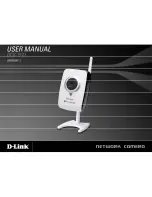
DCA
Page 1
Introduction
Moore Industries’ Direct Current Alarm (DCA) is a
highly versatile, fully adjustable device that is factory-
configured to accept either current or voltage input.
The unit’s internal relays are tripped when input
deviates from a customer-set “safe” range defined by
adjustable trip points. The DCA is ideal for use in an
alarm system, where it may be used to activate a
warning device, or to drive an analog indicator.
This manual provides a brief description of the DCA,
including its physical characteristics and options; a
table of performance and operating specifications; a
set of procedures for calibrating the unit; instructions
for installation, including physical mounting and
electrical connections; and finally, information on
basic maintenance and troubleshooting.
Notes, Cautions, and Warnings are included as a
means of identifying those practices that may present
unnecessary inconveniences (notes), result in dam-
age to the unit (cautions), or cause injury (warnings).
Description
The DCA comes in either Moore Industries’ standard
(STD) or plug-in card (PC) housing.
The STD unit can be used with a variety of mounting
options, including those suitable for use with explo-
sion-proof and NEMA enclosures.
PC-style DCA’s are designed for use with Moore
Industries’ multi-position card racks; the surface
mounted SMR, or the rack mounted RMR.
Both STD and PC DCA’s are available with either
single or dual alarm configurations. The relays used
are single-pole/double-throw, form C. There are a
number of input ranges and alternate relay ratings
available.
Operationally, the unit can be ordered with any com-
bination of single, dual, high, low, fail-safe, or non-fail-
safe alarm relays. The following paragraphs describe
each of these configurations.
High Alarm/Low Alarm.
A DCA configured as a high
alarm is tripped when the input increases, and
reaches a customer-set trip point. A low alarm unit is
tripped by a decreasing input that drops below a
customer-set trip point.
Figure 1 illustrates the concept.
Fail-safe/Non-fail-safe.
A fail-safe unit’s relay is
energized when input is within a “safe” range, i.e. is
normal, or not in an alarm condition. When the input
goes into an alarm condition, reaching a trip point or
losing power, the relay of a fail-safe DCA is de-
energized.
Conversely, a non-fail-safe unit’s relay is de-energized
when input is within the customer-specified “safe”
range, and is energized when the input reaches the
trip point setting.
Figure 1 also depicts the action of fail-safe relays.
Controls and Indicators
Every type and configuration of DCA comes with
potentiometers (pots) to set the alarm trip points of
each installed relay. Additional pots for controlling
unit dead band are available as an option, and preci-
sion ten-turn vernier scales can be used instead of
the standard pots.
Trip point pots afford full 0- to 100-percent adjustabil-
ity over the unit’s specified span.
Each installed relay is wired to a front panel LED,
which lights when the relay is energized. Depending
upon the type of relay ordered, i.e. fail-safe/non-fail-
safe, a lit LED can indicate either an “alarm” or a “non-
alarm” input condition.
Table 1 summarizes the alarm type/LED status
options for the available types of DCA.




































